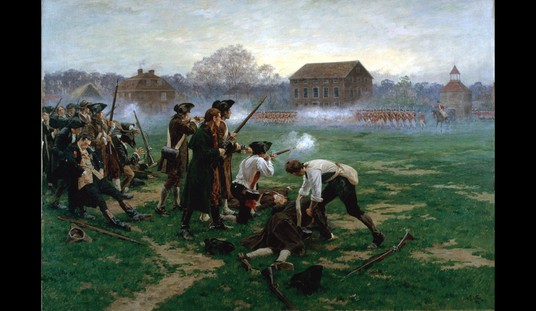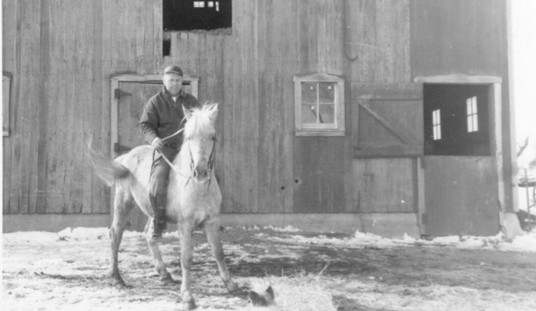The degree to which the liberal establishment is terrified of the coming political Armageddon is on full display in today’s New York Times. An editorial, titled Crazy Talk, purports to portray the GOP field (this would be five successful governors, three senators, and three very successful private citizens) as out of touch.
For instance:
Start with immigration, and the idea that any president could or should engineer the mass expulsion of 11 million unauthorized immigrants. Not one candidate said that a 21st-century trail of tears, deploying railroad cars, federal troops and police dogs on a continental scale, cannot happen and would be morally obscene.
To be sure, I checked the transcript and no one actually said that. But polls show that over half of GOP voters (including me) favor deporting illegals. There probably are people out there who favor house to house searches, because there are people out there who believe most anything, but I think the Trail of Tears notion is simply a massively dishonest representation of the issue.
Jeb Bush spun a particularly repellent fantasy. Speaking reverently of his brother the president, he said, “He kept us safe,” and invoked the carnage of 9/11. Wait, what? Did he mean George W. Bush, who was warned about the threat that Al Qaeda would attack? Who then invaded a non sequitur country, Iraq, over a nonexistent threat?
I’m shocked that anyone who says this didn’t say Bush ordered FEMA to secretly demolish the twin towers. The 9/11 Commission Report thoroughly demolished the idea of advance warning and the New York Times, itself, has reported on US soldiers injured from Iraqi chemical weapons and on the CIA’s program to purchase Iraqi chemical weapons after the war started.
It goes on and on. It is nuts. It is disreputable. It is exactly what you’d expect to hear discussed in the home of any rich liberal on either coast.
But the biggest howler, a statement so bizarrely out of touch with America that it could only have originated in Manhattan, was this:
They accepted the need to “control our borders” with a 2,000-mile fence. Even [mc_name name=’Sen. Marco Rubio (R-FL)’ chamber=’senate’ mcid=’R000595′ ] of Florida, once an immigration moderate, endorsed the fence. Mr. Carson actually suggested two fences, for double security, with a road in between. Do these people have to be sent to the Rio Grande Valley to see how ludicrous a border fence — over mountains, vast deserts, remote valleys and private property — would be?
Can a valley, like the Rio Grande Valley, have mountains and valleys? No. It can’t. A valley with mountains ceases, by definition, to be a valley. To the extent that the Rio Grande, itself, comes into contact with mountains, it does so at its upper reaches in Colorado… where we are not, AFAIK, talking about building a fence. A better perspective comes from this Houston Chronicle article on the Rio Grande Valley
Why, a reader asked, do people call the subtropical southern tip of Texas the Rio Grande Valley?
“There isn’t a mountain for 500 miles in any direction. Doesn’t the word, valley, suggest elevation surrounding it?” she said.
It looks like the New York Times editors simply consulted Wikipedia:
The Rio Grande rises in the western part of the Rio Grande National Forest in the U.S. state of Colorado. The river is formed by the joining of several streams at the base of Canby Mountain in the San Juan Mountains, just east of the Continental Divide. From there, it flows through the San Luis Valley, then south into New Mexico, passing through Española,Albuquerque, and Las Cruces to El Paso, Texas and Ciudad Juárez, Chihuahua. Below El Paso, it serves as part of the border between the United States and Mexico.
The official river border measurement ranges from 889 miles (1,431 km) to 1,248 miles (2,008 km), depending on how the river is measured.[2] A major tributary, the Rio Conchos, enters at Ojinaga, Chihuahua, below El Paso, and supplies most of the water in the border segment. Other well-known tributaries include the Pecos and the smaller Devils, which join the Rio Grande on the site of Amistad Dam. Despite its name and length, the Rio Grande is not navigable by ocean-going ships, nor do smaller passenger boats or cargo barges use it as a route. It is barely navigable at all, except by small boats in a few places.
The Rio Grande rises in high mountains and flows for much of its length at high elevation; El Paso is 3,762 feet (1,147 m) above sea level. In New Mexico, the river flows through theRio Grande rift from one sediment-filled basin to another, cutting canyons between the basins and supporting a fragile bosque ecosystem on its flood plain. From El Paso eastward, the river flows through desert. Only in the subtropical lower Rio Grande Valley does extensive irrigated agriculture exist. The river ends in a small, sandy delta at the Gulf of Mexico. During portions of 2001 and 2002, the mouth of the Rio Grande was blocked by a sandbar. In the fall of 2003, the sandbar was cleared by high river flows around 7,063 cubic feet per second (200 m3/s).[5]
And assumed that massive mountains, deep valleys, and vast deserts crisscrossed the Valley. If anyone needs to visit the Rio Grande Valley, it isn’t the GOP presidential field it is the New York Times editorial board.














Join the conversation as a VIP Member